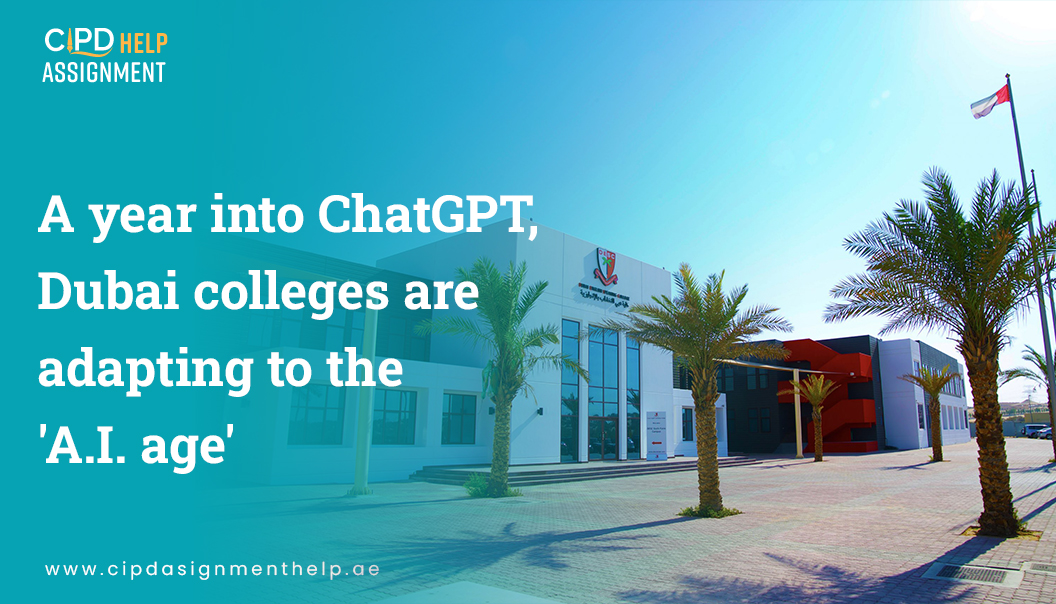Introduction:
This blog will examine how artificial intelligence (AI) is affecting higher education. What problems it poses for established schools, and how universities might change to remain relevant in the digital era.
Higher education institutions may use AI to transform the student experience in several ways. The field of individualized learning offers one of the biggest opportunities. Colleges can use AI algorithms to assess student data and create personalized courses that meet each student’s unique learning preferences, styles, and speed. This promotes a deeper comprehension of the material and increases student participation.
How teachers use AI
AI is also useful for giving teachers and students immediate feedback. Students can receive instant feedback on their performance through AI-powered assessment tools. Allowing them to pinpoint areas for growth and modify their learning approaches accordingly. On the other hand, teachers can utilize AI-generated insights to improve their pedagogy, spot underachieving pupils, and offer focused assistance where it’s required.
AI’s potential for institutions
AI has the power to completely transform higher education in several ways. Which includes improving student support services, personalizing learning experiences, and expediting administrative procedures. Three ways AI supports higher education are as follows:
⦁ Personalized learning: AI-driven systems that help to determine the learning preferences, strengths, and weaknesses of every student as well as help to modify the curriculum and resources by those effective findings. However, with this customized method, students can learn at their own pace. This satisfies their unique requirements and contributes to a better educational experience.
⦁ Better student support – AI-powered chatbots and virtual assistants enable universities to give students immediate, round-the-clock assistance, respond to inquiries, provide direction, and track their progress. This helps students and frees up faculty and staff time for more complex work.
⦁ More efficient administrative processes – AI can automate time-consuming administrative tasks. Such as scheduling, admissions, and record-keeping, which results in more cost savings for universities and more efficient operations. This, in turn, enables universities to allocate resources more effectively, potentially improving the quality of education. Writing agencies like CIPD assignment Help Dubai are also using AI smartly and help many students.
The danger facing conventional universities
Even though artificial intelligence (AI) has many advantages, traditional schools and universities are challenged by AI in the following ways:
⦁ The transition to distance learning With more flexible and accessible learning options available. However, the emergence of AI-powered platforms has expedited the growth of online education. This change became most noticeable following the COVID-19 pandemic, which compelled educational institutions to adopt remote learning. Given the price and ease of online learning, some students might decide not to attend traditional campuses.
⦁ Declining demand for on-campus instruction – As more students choose online and alternative learning environments. However, there may be a decrease in the need for on-campus instruction. Traditional colleges may experience a decline in enrollment and financial strain as a result. Which would force them to review their programs and business strategies.
⦁ Increasing competition from alternative education providers – Traditional universities face a serious challenge from the growing market for AI-powered online and alternative education providers. Today’s students have access to a wide range of options. However, many of them are less expensive than traditional degrees. Among these are micro-credential programs, boot camps, and specialty courses.
How are traditional colleges going to survive?
Traditional universities need to embrace AI’s ability to improve education and change with the times to stay competitive.
⦁ Keep up with technology advancements: To enhance the educational experience for students, save expenses, and expedite operations, institutions should invest in AI-driven tools and platforms. This entails giving students access to cutting-edge technology that equips them for the workforce and integrating AI into the curriculum.
⦁ Encourage cooperation between AI and human educators – Understanding that AI shouldn’t take the place of human educators but rather support their work will be crucial in navigating the disruption it causes. The goal for colleges should be to foster a symbiotic relationship between AI and professors, leveraging technology to support and improve instruction. While preserving the vital human element that makes higher education unique.
In summary
Colleges need to encourage collaboration between technology and human instructors. To guarantee the smooth incorporation of AI into higher education. This entails fostering an innovative culture where faculty members are motivated to try out novel pedagogies, technology, and instructional strategies. To ensure that educators are up to date on the most recent developments in AI-driven educational technology establishments should also fund chances for professional development.
